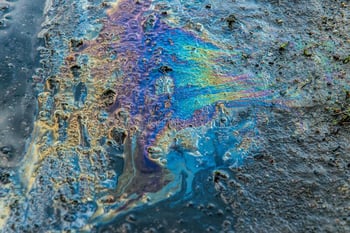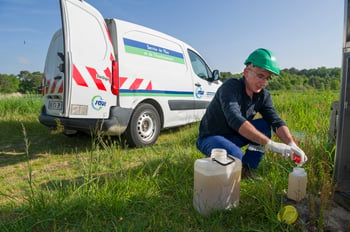All of us are concerned and potentially affected by the problem of water pollution. And on the issue of micropollutants in drinking water, local authorities certainly have a role to play in protecting us. France is leading from the front in terms of regulation, and is setting the benchmark for Europe in its commitment to take action on this issue.
Water pollution poses a danger not only to the balance of natural ecosystems, but also to human health. The micropollutants (drug residues and endocrine toxicity agents, pesticides, heavy metals, etc.) found in water generally, and drinking water in particular, are suspected of being harmful to humans, even when present in only very low concentrations.
Reducing water pollution at source

The first solution to be considered for reducing water pollution is what the authorities refer to as reduction at source. The basic principle here is to limit the release of micropollutants into the natural environment by controlling the production, sale and use of the products that contain them.
Examples include encouraging changes of habit in the way micropollutant-containing products are used in the home, and banning the sale of certain molecules. Some local authorities have also chosen to ban the use of plant protection products within their areas.
Discharges from industrial plants and hospitals may also be governed by special discharge agreements based on analysis of the effluents concerned, enabling the plant operator to commit formally to a precise level of tolerated environmental disruption. The ultimate aim of these agreements is to ensure that only treated water is discharged, or at the very least that the discharges made by an industrial plant can be effectively treated in the local authority wastewater treatment plant downstream.
A need for action at every stage of the water cycle

Even if we were able to cease all micropollutant emissions into the natural environment tomorrow, we would still not have any guarantee of raw water that is totally free of micropollutants. There are several reasons for this.
The first is that not all polluted water passes through the standard treatment system. Examples include pesticide-containing rainwater and irrigation water run-off from fields, and water from roofs that have been treated with moss killer. Rainwater run-off from roads also contains traces of heavy metals deposited on the road surface by vehicle tires... and there are many other examples.
The second reason is that the natural environment has been polluted over a long period of time, and it would take years for pollutants already present in the natural environment to fall below acceptable levels.
So treatment to remove micropollutants from water for human consumption is absolutely essential.
What are the potential health consequences?

A great deal of research has been focused on answering this question. Some of these compounds have been known for a long time, but new ones are being discovered every year, and although we are beginning to understand the effects of some of them (hormones and endocrine disruptors, for example), we already know that human exposure to these products must be reduced to the lowest-possible level.
A second perverse effect of these pollutants is that contact with several of them can create a cocktail effect with the potential to have serious and direct negative effects on human health.
Solutions for eliminating micropollutants from the water we drink

Although the treatments used in drinking water plants are extremely effective in breaking down certain types of pollution, they are much less effective with organic micropollutants. But for all those local authorities committed to providing high-quality water to their taxpayers, there are solutions that can be implemented right now to protect and conserve water resources.
These include:
- Chemical oxidation, which generally uses ozone, sometimes with the addition of ultraviolet radiation. The oxidizing capacity of ozone comes from the fact that it is highly unstable. When an activated carbon adsorption stage is added, oxidation can remove many of the micropollutants commonly found in wastewater.
- Adsorption is a technique that fixes micropollutants on the surface of activated carbon. Traditionally this has involved the use of filters containing activated carbon in granular or powdered form. A more innovative and effective solution is the use of fluidized beds of activated carbon micro-granules. This is the principle behind the Saur Group CarboPlus solution, which also offers the added advantage of a thermal regeneration process enabling the reuse of carbon micro-granules.
- Membrane filtration [nanofiltration or reverse osmosis] provides a physical barrier that micropollutants cannot pass through, and is particularly effective in the treatment of drug residues. Unfortunately though, it comes with a high price tag, and leaves behind it the problem of dealing with the concentrated mass of micropollutants retained by the membranes.
Micropollutants are a global problem affecting both the environment and human health. European legislation, which has generally evolved towards encouraging their treatment in recent years, continues to do so for drinking water and wastewater. Although the expectation is that regulations will impose more substantial reduction levels in the near future, there remains an urgent need to act ahead of regulatory expectations as part of delivering safe, high-quality drinking water to all consumers.
To find out more and take the next step, download our illustrated guide to methanization!
![[Illustrated guide] Using methanization to treat your effluents and generate energy - A guide](https://no-cache.hubspot.com/cta/default/7160320/edf1079b-0646-43e2-a7e7-18d056620526.png)